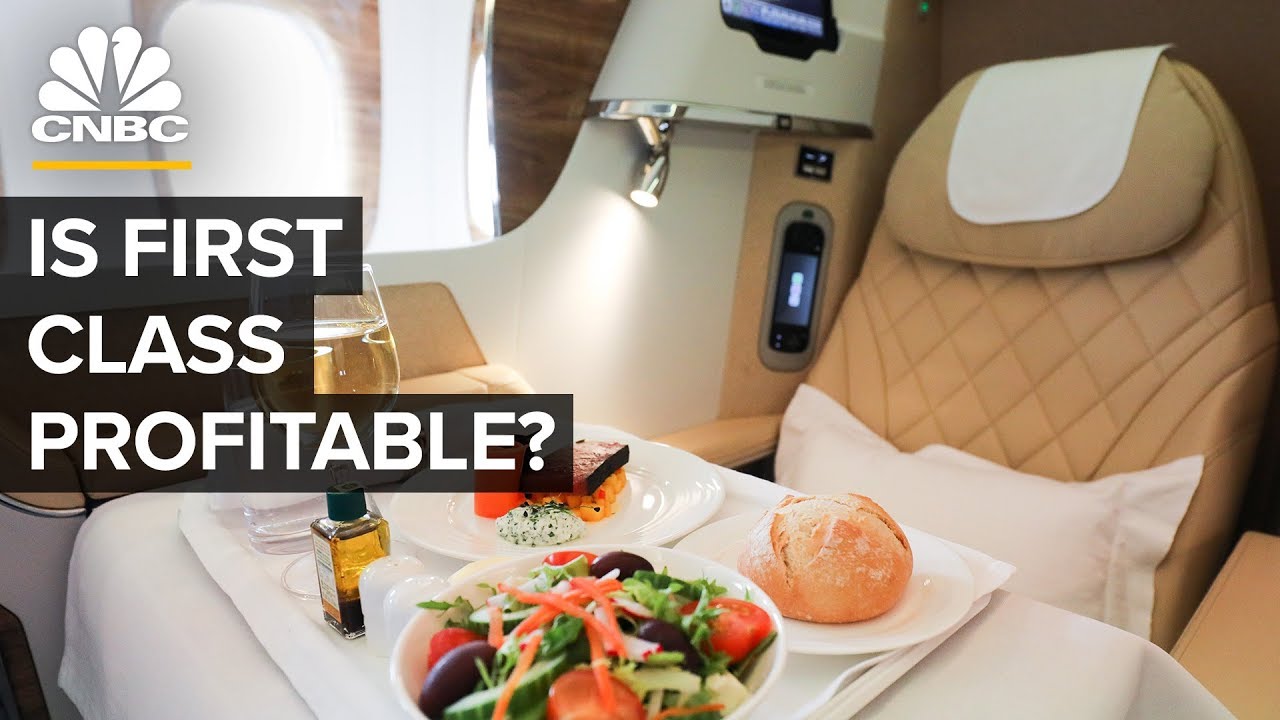
Do Airlines Make Money From First Class?
Airlines, including Delta and United, are rolling out business-class cabins with pods and suites reminiscent of the top-tier of commercial air travel, all in denser cabins, aimed at those flying for work. Rival Qatar Airways this year unveiled a business-class cabin that features side-by-seats that can be converted into a double bed.
Unlike the rare few who shell out for the five-figure fare for a seat in an international first class, a business traveler is a repeat customer. Airlines are betting that these travelers (or more likely, their employers) are willing to splurge on a seat that provides ample workspace and a lie-flat bed for a good night’s sleep, and that it will boost their bottom lines. Elsewhere, these carriers are grappling with flyers constantly on the lookout for the latest rock-bottom fare.
Airlines are finding that they don’t need first class and want to fill their planes with as many paying passengers as possible. Emirates, which offers a first-class product with a shower, said it will fly planes between Dubai and London this December with business class and economy only, on some flights, due to high demand.
Utility not luxury
“The majority of the high-value passengers prefer to be left alone than lavished upon,” said Bruce Spear, a partner and a travel and transportation analyst at consulting firm Oliver Wyman. “It’s utility that carries the day, not luxury.”
Only 5.3 percent of travelers in the first seven months of 2017 flew in a premium-class cabin, which includes business class, but their contribution of airline revenue was 26 percent in that period, according to the International Air Transport Association, a trade group representing the world’s biggest airlines.
But some airlines are clinging to first-class cabins, and making them more opulent than ever.
Singapore Airlines, whose luxurious first-class service has long been part of its marketing, this week unveiled its new flagship product: large suites that look more like flying hotel rooms than airplane seats. But these suites, which feature fold-out beds and swivel seats, are fewer now —the revamped cabin reduced the number of suites on board the A380, the world’s largest airplane from 12 to six.
It pits the carrier against Persian Gulf airlines, like Etihad, which offers a three-room suite it calls “The Residence.”
Such a first-class product “creates a brand halo” for the airline.
But as lie-flat beds and pods in business class become the norm, carriers are looking at other ways to stand out in the premium cabin world, adding fancy bedding, food and amenities kits that include pajamas.
First-class freebies are fading
Airlines also want passengers to pay for these seats, and have scaled back on free upgrades and instead sell the bump to the better cabin, or sell the tickets outright.
When asked about why it is so difficult to get upgraded, United CEO Oscar Munoz told CNBC last month that passengers are paying for seats and “that’s a good thing for our business.”
A decade ago Delta would sell only about 15 percent of its first-class cabins and now between 50 and 60 percent is sold, Delta’s CEO, Ed Bastian, told reporters last month. He recently said it was too early to determine the percentage of business-class seats that are sold, because its revamped Delta One cabins are brand new.
“Everybody loves a free something,” Bastian said at a conference a month earlier. “Any business where you give the majority of your best product away, it doesn’t work.”
Delta Air Lines, United Airlines and American Airlines make a lot of their money at the front of the plane. A strong economy and industry consolidation has allowed the airlines, in recent years, to invest in more fuel efficient planes with better cabins focusing on premium classes.
One focus has been rethinking business class. First class internationally and on some key domestic routes has become a hybrid of first and business class.
As of November 2019, if you wanted to book a first class round trip flight on Emirates from JFK to Dubai at the last minute it could cost you over $23,000.
Flying from New York to Mumbai? Etihad Airways offers a three-room luxury suite called The Residence which features a private bathroom, a private living room and a personal butler. Flying round trip on Etihad for that flight could be over $36,000.
And, for about $3,000, American Airlines Flagship First fliers can go from New York to Los Angeles with access to an exclusive check-in area and premium wines in the flagship lounge.
While the airlines make a significant amount of money packing people into coach like cattle, premium cabins like business and first class are still a major source of income for U.S carriers.










